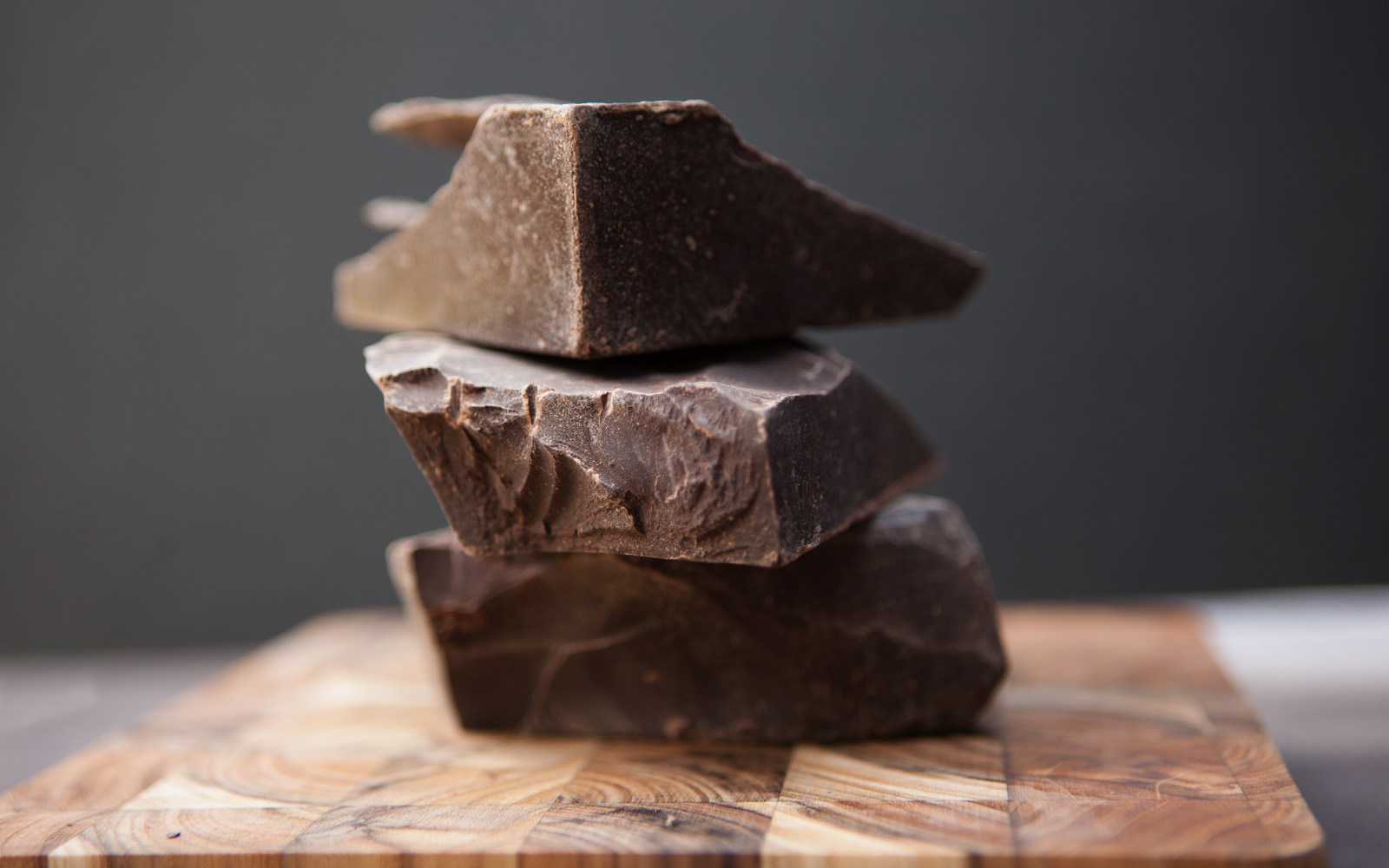There is a very nourishing reason why we crave it .
Chocolate affects our mood-hormones; serotonin, endorphins and phenyl-ethylamine. The very same hormones the body releases in response to romance. Serotonin is our anti-depressant hormone, the one that makes us feel good, emotionally stabile and calm. Endorphins make us feel enthusiastic and powerful. These are also the hormones that are released when you exercise. Phenyl-ethylamine is a mood enhancer, acting as a neurotransmitter, it can (in small doses) help against ADHD. Apart from improving your mood it can also help reduce appetite.
So is chocolate as good for you as romance? Not quite. I do suggest that you develop a heartfelt relationship with both your Self and others as the main source of feel good “food” for your wholeness, as well as good real whole food and a movement routine. Here is a bit more about why.
The history and health facts of chocolate.
Chocolate comes from the cacao tree and its history goes back to the Aztecs. The cacao beans were made into a beverage that was given to the Spanish conqueror Cortez, who then subsequently took it home to Spain. The original drink was very bitter and the Spanish added sugar instead of chilies, as well as cinnamon and vanilla. Chocolate as candy, the way we know it, did not come around until the 1800’s.
The allure of chocolate is of course also the taste, which satisfies cravings for fat and carbohydrates. Avocado does give you this too but admittedly does not have the same sinful satisfaction, -and it might not be as romantic either.
The fat in chocolate is a high concentration of stearic acid, which is a saturated fatty acid that has a neutral effect on cholesterol. This makes it a heart healthy treat, but as with everything else concerning the heart; less is more, except maybe when it comes to romance.
According to a study, presented to the European Society of Cardiology (ESC), cocoa polyphenols appear to relax the blood vessels, which makes blood flow more efficient and reduces the strain on the heart. Again, a little goes a long way!
There is also evidence to suggest that cocoa polyphenols act like antioxidants in the body, which is why dark chocolate and raw chocolate is called a super-food. However, a note to Self; antioxidants are also found in vegetables and fruit, and even in black rice and green tea as well, which you probably did not expect.
There are several good reasons why chocolate is being called a super-food because it is not only high in anti-oxidants it also contains a number of essential minerals; such as potassium, copper and magnesium, flavonoids and several vitamins; including vitamin B1, B2, D, and E. The phytochemical plant pigments from flavonoids act as natural antioxidants and neutralize free radicals that can damage the body, tissue, and cells. Dairy can however interfere with the absorption of these, which is why only dark chocolate offer the health benefits.
It would also not help as an appetite suppressant if it has high amounts of sugar in it. Since the sugar feeds artificial hunger you are sort of nixing out the goodness of chocolate and might end up binging on it instead. It can however be a great little snack-treat if it is high % cacao. Even for diabetics.
What about the harmful effects?
As mentioned above, the flavonoids help improve blood-vessel flexibility, which is why dark chocolate can be the better treat for the heart over other candy and cakes. Note that I said better choice than other sugary treats. It is still a treat, not food.
We do still need to keep the calories in mind as well. The average small chocolate bar serving contains approximately 250 calories, which means it is low enough to enjoy as a small treat instead of other sugary ones. A blueberry muffin or piece of apple pie for example can be about 400-550 calories, and they do not contain the health benefits that chocolate does.
However, a chocolate bar does contain sugar, which is the health culprit. Chocolate is also a very intense and therefore extreme food for our bodies to “cope” with, and its effect can be overly stimulating, causing heart palpitations, headaches, – and also acne.
What to do then?
Enjoy chocolate for its loveliness, in small portions, from time to time. This is not an either or, all or nothing, always or never. Instead of depriving yourself completely from the luxury of indulging in your favorite chocolate, nourish yourself with a little bit when the craving comes over you. Depriving yourself is like sending a message to your subconscious mind that you cannot have it or that you are “bad” for eating it. This will just cause a greater risk of ending up binging on it when your mood is low, and maybe even start beating yourself up for having it, only to end up eating more.
Other ways of dealing with feeling low is to have a nice meal with good wholegrain and root vegetables (rich in serotonin) and remember the green vegetables (rich in minerals, vitamins, and anti-oxidants), maybe include a phone-call to your favorite friend (rich in feeling loved), or a long walk (rich in endorphins). All of this adds up to healthy self-nourishment.
So when you are going to have chocolate; have a really really good piece of very very dark chocolate and enjoy it fully. Choose one that is high in cacao content (above 70%) and low in sugar (real) and dairy (best if there is no dairy in it at all).
You can also try these homemade truffles for a fantastic wholesome chocolate treat.
To learn more about how to practice Self-Nourishment by changing your relationship to food and your Self; join the online program. Or schedule a private session with me.

